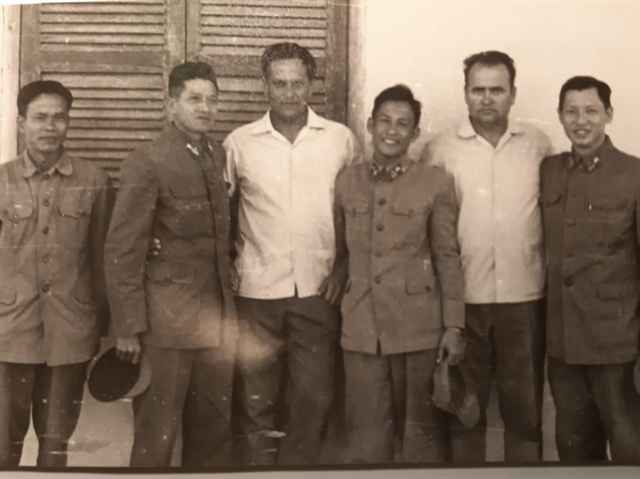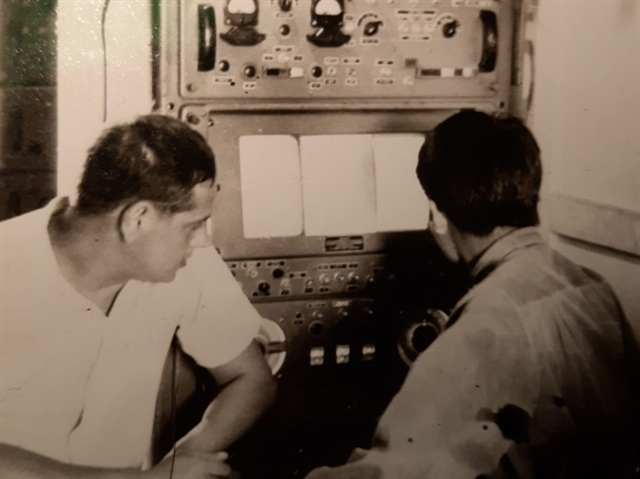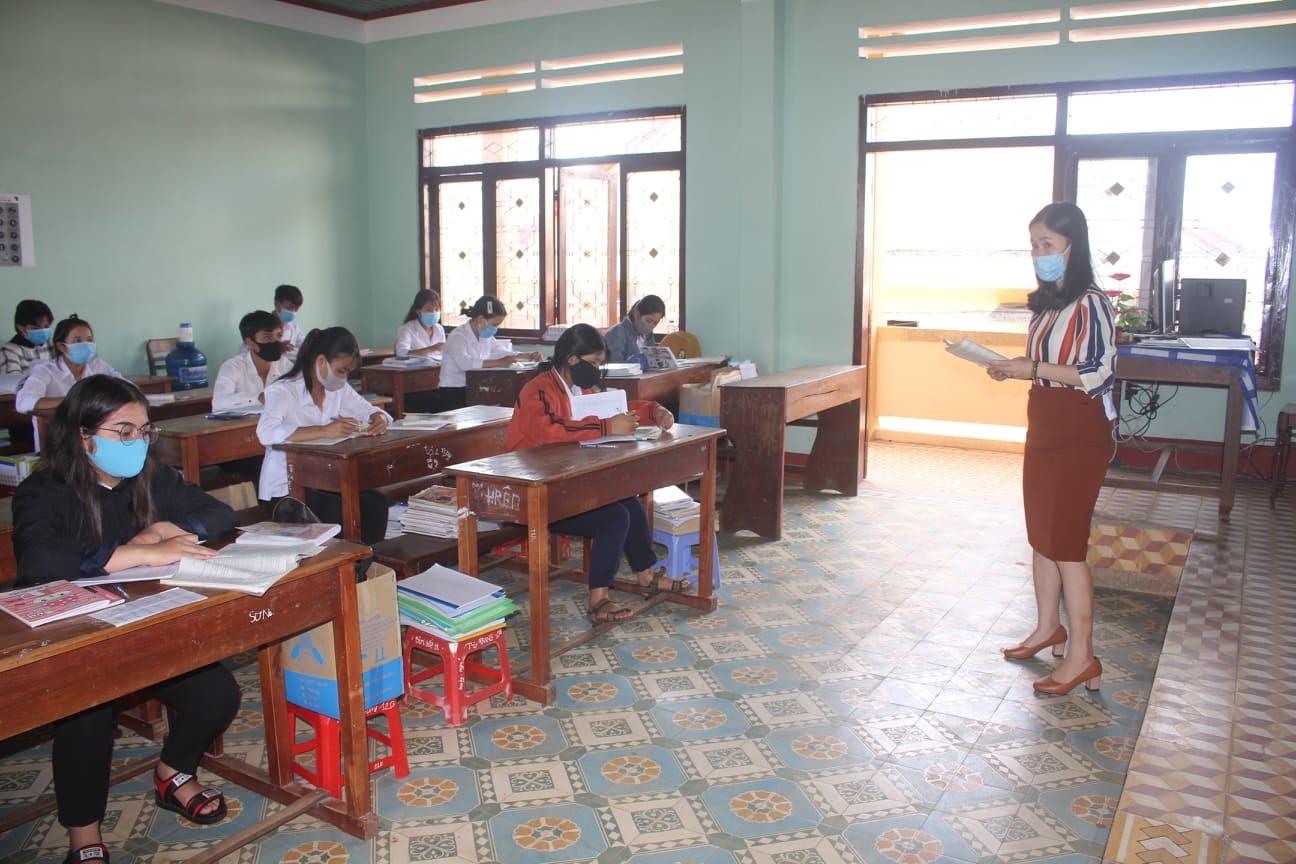Soviet military experts: The silent force behind Việt Nam’s air defence success_ty le bong da truc tuyen
Soviet military experts: Thety le bong da truc tuyen silent force behind Việt Nam’s air defence success
April 28, 2025 - 09:11 |
| Colonel Anatoly Nazarov, Vice Chairman of the St. Petersburg chapter of the Inter-regional Public Organisation of Veterans of the Vietnam War (MOOVVV) (third from left), poses with Vietnamese officers. VNA/VNS Photos |
By Lieutenant Colonel Lê Minh Nam
*HÀ NỘI — In July 1965, as the resistance war against the United States escalated, the Soviet Union made a pivotal move to support the Việt Nam People's Army in its fight for national reunification.
Responding to a formal request from the Democratic Republic of Việt Nam, the Soviet Union established a team of military experts to assist Vietnamese forces in two key areas: air defence and air force operations.
From the outset of the war, the Việt Nam Workers’ Party (now the Communist Party of Việt Nam), under the leadership of President Hồ Chí Minh, identified military support from socialist allies as a crucial component of the war effort.
“We must take full advantage of military assistance from fraternal countries,” the leader said, “to best serve the struggle against US imperialism and to strengthen international solidarity, particularly with the Soviet Union and China.”
Alongside the provision of air defence equipment, the Soviet Union sent experts to train the Vietnamese military in the use and maintenance of advanced weapon systems. The goal was not only to strengthen Việt Nam’s immediate combat capacity, but also to build long-term independence in operating and managing these systems.
In the early phases, Soviet military experts were directly involved in both training and combat. On July 24, 1965, under the watch of Vietnamese air defence troops, a Soviet combat crew operated a SAM-2 missile system and successfully shot down a US F-4C fighter jet. The engagement provided valuable experience for the Vietnamese forces, helping them quickly master the technical features of the weapons and move toward independent operations.
By May 1966, a total of 2,266 Soviet air defence specialists had been deployed to Việt Nam, helping to train 10 surface-to-air missile (SAM) regiments on-site. As Vietnamese air defence capabilities advanced, the US Air Force adjusted its tactics and ramped up electronic countermeasures, often disrupting or disabling missiles mid-flight.
In response to the changing battlefield dynamics, the Soviet Union sent three additional groups of specialists in late 1966. Their focus was missile science, electronic warfare and military-industrial support.
With this help, Vietnamese forces began improving their own systems and strategies. One of the most significant milestones came on September 17, 1967, when Vietnamese military shot down their first B-52 bomber over the North.
Soviet experts played a vital role far beyond the front lines. They assisted with assembling and maintaining equipment, guided fuel loading and missile deployment procedures, and helped Vietnamese forces master complex technologies. Together with Vietnamese engineers, they co-authored technical manuals, translated documents, developed training curricula and taught courses on radio and electronic systems.
Between 1965 and 1972, four major technical upgrade phases were implemented on the SAM-2 system, resulting in 40 distinct improvements. These refinements helped the Vietnamese forces adapt to evolving US tactics and significantly bolstered the effectiveness of their air defences.
By the end of 1972, as Soviet advisors continued to support from behind the scenes, Việt Nam’s air defence forces achieved a historic feat, shooting down 36 US aircraft in a single campaign, including 29 B-52 bombers.
The victory, hailed as the 'Điện Biên Phủ in the Air', marked the failure of the US strategic bombing campaign and helped set the stage for eventual peace talks.
As Vietnamese forces became fully self-reliant and technically proficient, the Soviet experts began to withdraw, having completed a mission that left an indelible mark on one of the most pivotal chapters in modern military history.
Behind Việt Nam’s wings
While Soviet specialists played a vital role in air defence, their contributions to the Việt Nam People’s Air Force were equally transformative. Alongside equipping Vietnamese forces with aircraft and aviation technology, Soviet military experts helped maintain, repair and operate a range of transport and combat aircraft and, crucially, trained a new generation of Vietnamese fighter pilots.
At the time, many Vietnamese pilots had received only short-term training in the Soviet Union or China, with little real combat experience. Recognising this gap, Soviet advisors focused on improving pilot proficiency in flying MiG-17 fighters and transitioning them to the more advanced MiG-21. Their teaching philosophy was simple but powerful: “Follow my lead.”
 |
| Colonel Anatoly Nazarov pictured inside a missile control cabin. |
These experts not only instructed pilots in the classroom, but also designed flight training programmes, supervised assembly and testing of aircraft and conducted post-maintenance test flights. Their involvement was thorough, from co-writing air combat manuals to guiding bomber crews and navigation officers through the complex realities of aerial warfare in Việt Nam.
With support from the Soviet Union, Vietnamese pilots began to develop new tactics tailored to their conditions. One of the most significant breakthroughs was the 'semi-interception' strategy for MiG-21s: fast approach, deep strike, simultaneous attack and rapid withdrawal.
Between February 1965 and November 1968, the Việt Nam People’s Air Force launched 4,602 combat sorties, engaged in 251 dogfights and shot down 218 US aircraft. This success, combined with the broader Mậu Thân Offensive in Spring 1968, contributed to the US decision to halt bombing north of the 20th parallel, ending the first phase of its aerial campaign over North Việt Nam.
During the US bombing pause, the Vietnamese air force regrouped and intensified its training, particularly with a view toward taking down America’s most formidable weapon – the B-52 bomber.
A key step forward came on November 20, 1971, when MiG-21 pilot Vũ Đình Rạng fired two missiles that damaged a B-52 in combat, an event that reinforced Việt Nam’s determination to defeat the 'flying fortress'.
Việt Nam’s requests for more specialised support were met with unwavering commitment. “Whatever type of expert you need, in whatever number or level, you name it, and we’ll provide,” Soviet officials reportedly assured their Vietnamese counterparts.
Despite constant danger, Soviet advisors persevered. In 1972 alone, they participated in 3,850 training flights, totalling over 1,200 flight hours, including night flights and MiG-17-to-MiG-21 transitions. Their efforts laid the groundwork for one of the most dramatic moments in modern air combat.
On December 27, 1972, Vietnamese pilot Phạm Tuân made history. Flying a MiG-21, he shot down a B-52 bomber, an aircraft long considered untouchable. The downing of the B-52 symbolised a strategic shift in air power and helped seal the North’s success in the 'Điện Biên Phủ in the Air' campaign, forcing the US to de-escalate and sign the Paris Peace Accords just one month later.
As Việt Nam’s forces became increasingly self-sufficient, the Soviet Union began scaling down its presence. By late 1974, the role of Soviet personnel had shifted from direct military support to advisory work, focusing on writing training manuals, standardising procedures and strengthening institutional knowledge within Việt Nam’s air and air defence forces.
Between July 11, 1965 and December 31, 1974, more than 6,300 Soviet officers and generals, along with over 4,500 enlisted personnel, served in Việt Nam. Thirteen lost their lives in combat and three died from illness while stationed in the country.
Their contributions went far beyond the battlefield. Soviet military experts helped Việt Nam build the foundations of a robust air force and air defence command. From instructors to advisors, they formed the core of a knowledge-sharing network that elevated Việt Nam’s military capabilities and ensured long-term sustainability.
As noted by Vietnamese officials: “Through their sacrifices and support, Soviet experts opened the door to a lasting diplomatic relationship with the Democratic Republic of Việt Nam.”
In recognition of their invaluable service, the Vietnamese state awarded thousands of medals and honours to Soviet individuals and units. — VNS
*Lieutenant Colonel Lê Minh Nam has a Master's Degree and is currently with the Institute for Strategic and Military History of Việt Nam. This article was originally published by Vietnamnet.
- Kèo Nhà Cái
- Kết quả Man City vs Newcastle: Man 'xanh' trút giận
- Linebox, game Việt đáng chú ý đến từ tGame
- Trải nghiệm phiên bản Hyundai SantaFe 2015 lắp ráp tại Việt Nam
- Giới kinh doanh trong nước đánh giá gì về Samsung Galaxy Note 5?
- Nhận định, soi kèo Central Coast Mariners vs Brisbane Roar, 16h35 ngày 2/5: Tin vào Brisbane Roar
- Truyện Bổn Cung Không Thể
- [Infographic] Dàn boss “khủng” của Bách Chiến Vô Song 2
- Khi các nhân vật trong game không có lông mày
- Biệt thự cổ hơn 100 năm tuổi ở Sài Gòn bị đập bỏ khiến nhiều người tiếc nuối
- [GPL Mùa Hè 2015] Những cái nhất của ngày thi đấu thứ hai vòng bảng thứ hai
- Hình Ảnh
- Tin HOT Nhà Cái


